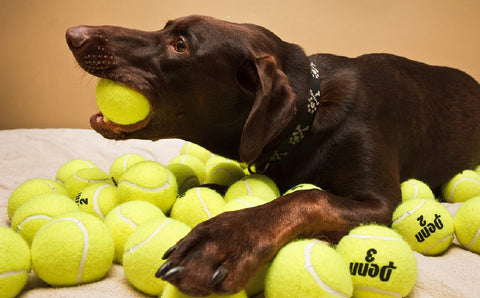Dog aggression is a complex issue that can be challenging for both owners and their canine companions. As a dog behaviorist with a focus on rehabilitation, I understand that addressing aggression in dogs requires a thoughtful approach that goes beyond traditional dog training methods. In this blog, we'll explore the causes of dog aggression and offer insights into how to rehabilitate aggressive behavior in dogs.
Understanding Dog Aggression:
Before we delve into the rehabilitation process, it's crucial to comprehend the underlying factors contributing to dog aggression. Aggression in dogs can manifest in various forms, including fear-based aggression, territorial aggression, possessive aggression, and more. It's essential to recognize that aggression is typically a symptom of an underlying issue, rather than the problem itself.
- Identify Triggers: The first step in rehabilitation is to identify the specific triggers that lead to aggressive behavior. This could be fear of strangers, resource guarding, or even medical issues causing pain or discomfort. A thorough assessment is necessary to pinpoint the root cause.
- Consult a Professional: Seek the guidance of a professional dog behaviorist who specializes in dog rehabilitation. They can provide valuable insights into your dog's unique situation and create a tailored plan for rehabilitation.
Rehabilitation Techniques
As a dog behaviorist who focuses on rehabilitation, I prefer to use dog psychology principles over traditional dog training methods, however, that doesn’t mean I don’t use traditional methods to help dogs as needed. Here are some techniques to consider:
- Counterconditioning: This involves changing your dog's emotional response to the trigger by pairing it with something positive. For example, if your dog is aggressive towards strangers, expose them to controlled, positive interactions with strangers while rewarding calm behavior.
- Desensitization: Gradual exposure to the trigger can help reduce your dog's reactivity over time. Start with low-intensity exposures and gradually increase the intensity as your dog becomes more comfortable.
- Behavior Modification: Work on building alternative behaviors that are incompatible with aggression. For instance, teach your dog to focus on you when encountering a trigger instead of reacting aggressively.
- Patience and Consistency: Rehabilitation takes time and dedication. Be patient with your dog's progress and maintain consistency in your training methods.
- Avoiding Punishment: As a neutral opinion dog behaviorist, I don't endorse the use of punitive measures to address aggression. Punishment can exacerbate fear or anxiety. Instead, focus on techniques that promote a sense of security and trust in your dog.
Rehabilitating dog aggression is a process that requires patience, understanding, and a commitment to your dog's well-being. Remember that aggression is often a symptom of underlying issues, and addressing those root causes is essential. Consult a professional who specializes in dog rehabilitation to create a customized plan for your dog's unique needs. By using dog psychology principles and avoiding punitive methods, you can help your furry friend overcome aggression and lead a happier, more balanced life.






